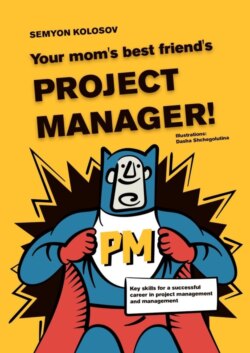Читать книгу Your mom’s best friend’s project manager! Key skills for a successful career in project management and management - Семён Колосов - Страница 19
Session 5.
Financial Management
ОглавлениеWhen it comes to finance, many PMs cringe and turn the tables on accountants, financiers or a process called “I don’t know, I plan the tasks and someone else does the math”. The ideal PM knows that he/she is not working in a hobby circle. The company is doing business and making money. For money to be made, there must be more revenue than expenses. He understands what revenue, inflows, expenses, and profitability are. Knows what affects these metrics in a project and how to work with them. All resources and tasks have a cost and their effective allocation affects the success of the project. This understanding of the financial aspects of a project helps him make informed decisions to optimize costs and increase profitability. And also not to get into preemptively failed or unfeasible projects. A general understanding of finances and managing the financial model of the project helps in better bagging, not…
Doctor: I see, Mr. Gregory. Please continue.
Financial modeling
When it comes to launching or deciding to launch a project, the ideal PM uses financial tools and programs to create detailed financial models. At least on a napkin, at least in Google Sheets. He or she knows how to create budgets, analyze financial metrics, and forecast future revenues and expenses. A project financial model describes project parameters in money, allows you to interpret financial data and draw reasonable conclusions. The ideal PM always keeps the financial model up to date. At any given time, he or she knows what the projected profitability of the project will be and what will happen if a developer is suddenly removed from the project or a client takes several weeks to coordinate the color of a button with his wife. If due to the specifics of the project the financial model also becomes complex or individual calculations are needed, PM quickly finds a common language with financiers to make a tool convenient for all. Since the concepts of PL, CF, CM and COST for an ideal PM are not TikTok slang. We can say that a financial model for a PM is like a unit-economy for products. It gives you an understanding of the parameters at which the project will succeed, and at which parameters it is not even worth starting and you need to change the conditions. The financial model fixes the indicators at the beginning of the project, always shows the planned figures, the forecast of hitting the plan and the actual figures. The PM monitors deviations and makes decisions. The head of such a PM or CEO may not even communicate with him if he is sure that the financial model is up to date and the numbers do not give alarm bells. Financial modeling makes the ideal PM an entrepreneur in his project, and this is a completely different level of thinking and management.
Cash flow
Everything may be rosy on paper or in the tables, but if you don’t get the planned cash (CF), you may have a cash gap. Cash flow is live money that falls into the company’s account. It is used to pay salaries and buy coffee for the office. Every month, regardless of how things are going in the project. When there is no money in the account, but there are expenses, it is unpleasant. It’s good if the lost money covers the income from other projects. But this is not always the case. That’s why the ideal PM ensures that the money is received in a timely manner. From the very beginning, from getting to know the client to receiving payments, he or she builds agreements and controls the process to make sure everything is on time. Believe me, as soon as a scheduled money arrival appears in the financial model, the finance people read it as “PM [Name] has signed in blood that amount N will be on X number. Nothing can prevent that, and if it does, the PM will kick that money out and we are 100% counting on it.” They’ll never say that, but that’s what they think. For the ideal PM, getting paid is a separate sub-project. From the beginning, he studies the payment process at the client’s company, outlines it and coordinates it. He knows the timings and everyone involved so he can monitor and very specifically ping who needs to be pinged. When necessary, he can even go into “cute collector” mode or escalate when nothing else is working.
